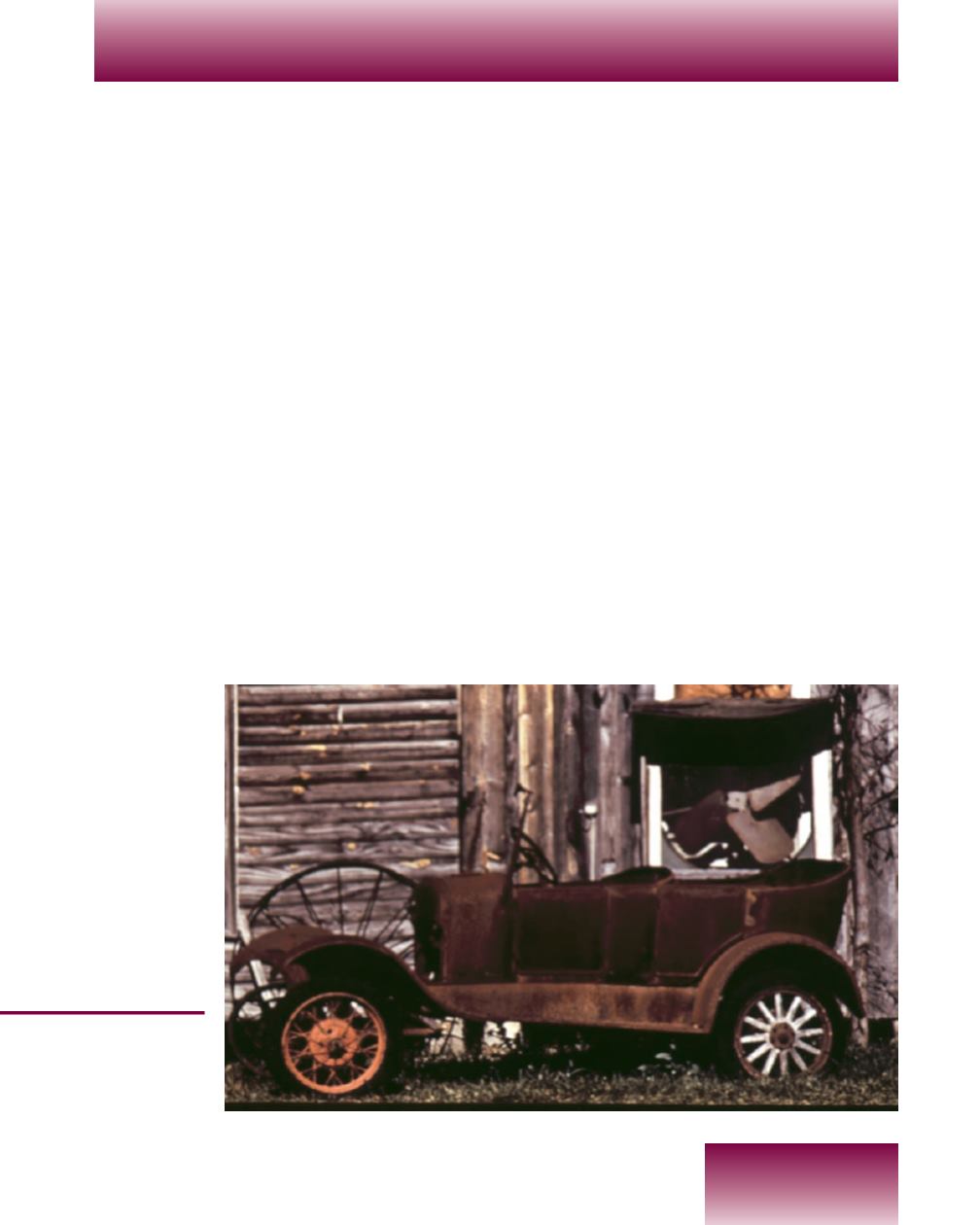
Chapter 9
●
143
The Great Depression
T
he 1920s was a period of growth for
many industries in Pennsylvania.
Then, in 1929, the world seemed to
cave in. The
Great Depression
hit
Pennsylvania and the rest of theworld. This
depression
happened as a result of very
slow growth of industry. Many people lost
their jobs. Hundreds of businesses failed,
and many people lost their farms, homes,
and savings. When people had no jobs,
they also had no money. Without money,
they couldnot buy the things they needed.
Then, shop owners did not buy the
products that factories produced. Many
peoplewere close to starvationbecause they
had no way to earn money. People stood
and waited in lines, called soup lines, for
hours hoping to get some bread and soup.
Pennsylvania was one of the hardest hit
states by the depression. By 1932, nearly
one million people lost their jobs. This
amounted to one out of four workers
having no work. In some mining and steel
towns, eight out of 10people lost their jobs.
In1930,
GiffordPinchot
(pin cho)was
elected governor of Pennsylvania. He took
action to provide food and jobs for people.
Manypeoplewere put toworkon the roads
and public buildings. Governor Pinchot
started a road-building project to “get the
farmer out of themud.”Dirt roads were no
longer good enough for the car. Improving
the roads created new jobs. It also
connected the rural and urban areas of
Pennsylvania.
In addition, Pinchot began projects that
dealt with the environment. He had state
parks built. Workers planted trees inmany
places. Dams were built to control floods.
Finally, the Great Depression ended, but it
took
World War II
to get our industries
working fully again.
A typical car
from the
Great
Depression.


